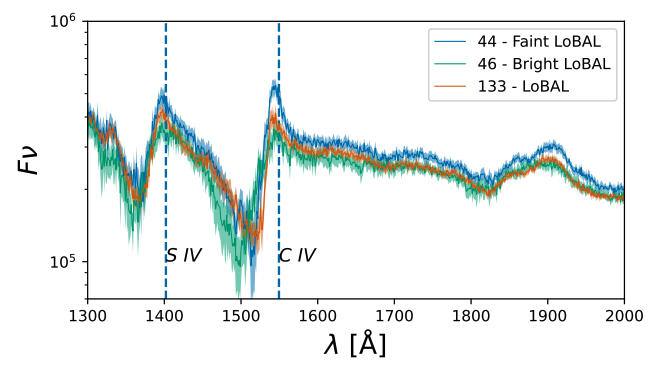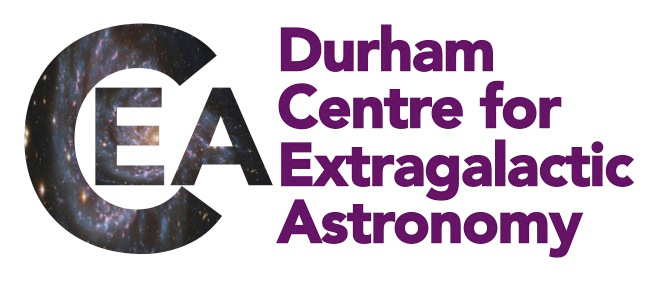CEA News, October 2022
Connecting radio emission to AGN wind properties with broad absorption line quasars
Broad absorption line quasars (BALQSOs) show strong signatures of powerful outflows, with the potential to alter the cosmic history of their host galaxies. These signatures are only seen in ~10 per cent of optically selected quasars, although the fraction significantly increases in IR and radio selected samples. A proven physical explanation for this observed fraction has yet to be found, along with a determination of why this fraction increases at radio wavelengths.
 Figure 14 in the paper, by splitting into a high and low radio luminosity sample, by
the median LoBAL radio luminosity, the authors can examine the dependency of absorption
properties on the magnitude of the radio emission.
Figure 14 in the paper, by splitting into a high and low radio luminosity sample, by
the median LoBAL radio luminosity, the authors can examine the dependency of absorption
properties on the magnitude of the radio emission.
Astronomers at the CEA present the largest sample of radio matched BALQSOs using the LOFAR Two-metre Sky Survey Data Release 2 and employ it to investigate radio properties of BALQSOs. Within the DR2 footprint, there are 3537 BALQSOs from Sloan Digital Sky Survey DR12 with continuum signal-to-noise ≥5.
The authors find radio-detections for 1108 BALQSOs, with an important subpopulation of 120 LoBALs, an unprecedented sample size for radio matched BALQSOs given the sky coverage to date. BALQSOs are a radio-quiet population that show an increase of ×1.50 radio-detection fraction compared to non-BALQSOs. LoBALs show an increase of ×2.22 that of non-BALQSO quasars. They show that this detection fraction correlates with wind-strength, reddening, and C IV emission properties of BALQSOs and that these features may be connected, although no single property can fully explain the enhanced radio detection fraction. They then create composite spectra for subclasses of BALQSOs based on wind strength and colour, finding differences in the absorption profiles of radio-detected and radio-undetected sources, particularly for LoBALs. Overall, the authors favour a wind-ISM interaction explanation for the increased radio-detection fraction of BALQSOs.

